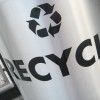Magnets are commonly used in the recycling process. Strong industrial magnets are often used to easily identify and separate various metals. These magnetic separators, divide non-ferrous metals like the aluminum commonly found in soda cans from ferrous metals like iron.
Magnetic separators are key in single-stream recycling, where individuals are not required to separate materials before they are brought to a recycling center. In this case, the center is responsible for separating the materials and do so with magnets and a strategically designed system of conveyor belts.
Not only do single-stream recycling facilities use magnets, but they also use magnetic fields for sorting. After high powered magnets have removed ferrous recyclables,
Eddy currents are deployed to repel non-ferrous metals like aluminum soda cans into a shoot, dividing them from other materials like plastic.
What Happens to Recycled Metals?
Metals from recycling centers are often sent to metal mills where they are heated to their respective melting points and poured into molds. These metals are then shipped and repurposed by various manufacturers that can reuse the metals for countless products. A few examples of products commonly made from recycled metals include: steel beams, car and bike parts and household appliances.
This method of recycling seems to be overtaking the previous multi-stream recycling process because it requires less effort for household by removing manual separation from the process. Of the
570 recycling facilities in the U.S., 240 now have single-stream operations.
Some studies have shown that it is responsible for increasing recycling volume while minimizing collection costs.
If you are unsure where to recycle locally, a quick Google search should help you find a center near you. Some towns and cities in the U.S. mandate recycling with waste collection and may have their own set of requirements for materials depending on what type of recycling process is standard.
Photo by
whitknead
